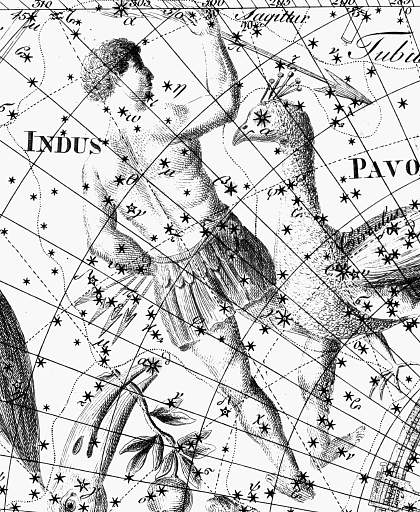Indus (constellation)
Notable features
The brightest star in the constellation, Alpha Indi, is visual magnitude 3.11.
Epsilon Indi is one of the closest stars to Earth, approximately 11.82 light years away. The system has been discovered to contain a pair of binary brown dwarfs, and has long been a prime candidate in SETI studies.
History
The constellation was one of twelve created by Petrus Plancius from the observations of Pieter Dirkszoon Keyser and Frederick de Houtman and it first appeared on a 35-cm diameter celestial globe published in 1597 (or 1598) in Amsterdam by Plancius with Jodocus Hondius. The first depiction of this constellation in a celestial atlas was in Johann Bayer's Uranometria of 1603. Plancius portrayed the figure as a nude male with arrows in both hands but no bow.
Indus in Military
USS Indus (AKN-1) is a United States Navy ship.
Below: "Indus, an Indian holding a spear and arrows, as shown in the Uranographia of Johann Bode."


No comments:
Post a Comment